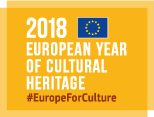INNOVATIONS
The ROLE MODEL CITIES Booklet developed by the ROCK project presents specific actions of each city, highlighting both soft and technological tools that have been used or tested to support the transformation of historic city centres. They are grouped under two main sections: - achievements at local level - obstacles and barriers centres and sites. A dedicated section focuses on how the ROCK role model cities faced coronavirus, capturing a short overview of the immediate impacts of the pandemic on the ROCK implementation process and the management of the crisis.
In recent decades, with the growing emphasis on the creative economy, culture has tended to be increasingly seen in political circles under the exclusive lens of the economy and its contribution to it. To counteract this tendency, it is necessary to define the social values associated with culture on a different basis from the traditional one. The work focuses on the valuation practices of the actors involved in cultural life. In this respect, three areas and three types of fundamental actors in the value dynamics of culture are distinguished: the field of cultural participation, in which citizenship is the protagonist; the field of cultural production and heritage, where the professionals of creation and preservation are the ones who take the initiative; and the field of cultural administration, in which it is the experts and politicians who decide. The project takes these three areas and this basic typology of actors as a starting point to structure the study of the different aspects involved in this evaluative dynamic: the emergence of values, the configuration of a value order and the political impulse of values.
CoHERE “Εurocraft” serious game was created in the framework of WP5 CoHERE project (Horizon 2020), with the aim to promote the communication of cultural heritage(s) between people within Europe, as well as to encourage the dialogue and the understanding of the “European Other”. Moreover, it will be a research tool to investigate the perceptual regions of pupils from different parts of Europe through: [i] their “footprints” (material they upload), [ii] the games they upload [iii] the games they play, and [iv] multilayer maps of heritage distributions they create (vid-maps) by overlapping thematic layers of heritage information.
The online magazine has established as a lively community of users, who participate in the initiative accessing the website and providing information about the sector, internationally. The magazine is officially registered and receives an average of 25,000 visits per month. It features projects and initiatives from all over the world, linking to original source to provide complete information. It is open to contributions from the whole community of digital cultural heritage and arts.
RURITAGE establishes a new heritage-led rural regeneration paradigm able to transform rural areas in sustainable development demonstration ‘laboratories’, through the enhancement of their unique Cultural and Natural Heritage potential. Through the identification of 6 Systemic Innovation Areas (SIAs) (Pilgrimage, Sustainable Local Food Production, Migration, Art and festivals, Resilience, Integrated Landscape management) and the analysis of 11 Cross-cutting Themes in 13 Role Models (RMs), RURITAGE will showcase heritage potential as a powerful economic, social and environmental motivator for regeneration, sustainable development, economic growth and improvement of people’s well-being and living environment in 6 Replicators (Rs). Moreover, through the creation of 19 Rural Heritage Hubs (RHHs) and 1 Digital Rural Heritage Hub (Digital RHH), RURITAGE will foster collective management, responsibility and ownership of Cultural and Natural Heritage.
Replacing existing buildings is prohibitively expensive or not allowed for historical heritage buildings and would have a significant societal and environmental impact. The innovation aims to develop a solution integrating advanced materials for the simultaneous seismic and energy retrofitting of the European building stock. To the present date, energy and seismic retrofitting are treated separately. To achieve cost effectiveness, iRESIST+ develops a novel approach and goes several steps beyond the state-of-the-art by proposing for a hybrid seismic-plus-energy retrofit which combines inorganic textile-based composites with thermal insulation systems. The effectiveness of the proposed retrofitting system will be validated experimentally in a full-scale building using the ELSA reaction wall facility. Moreover, a common approach for building performance classification is proposed, allowing to assess whether energy efficiency and disaster-resilient practices could be integrated.
STORM provides technological and procedural tools and methods to support decision makers faced with climate change and natural hazards during the Disaster Risk Reduction lifecycle, including prevention, preparedness, response and recovery activities. Specifically, STORM proposes a set of novel predictive models and improved non-invasive and non-destructive methods of survey and diagnosis, for effective prediction of environmental changes and for revealing threats and conditions that could damage cultural heritage. To this end, STORM determines how different vulnerable material and structures are affected by extreme weather events and risks associated to climatic condition, offering improved, effective adaptation and mitigation strategies, systems and technologies. An integrated system featuring new low-cost compact eco-friendly sensors, resilient solutions and survey and diagnosis technologies (including LiDAR and UAVs), as well as crowdsensing and crowdsourcing techniques will be provided over a collaborative, cloud based platform for collecting and enhancing knowledge, processes and methodologies on sustainable and effective safeguarding and management of European CH.
The HeAT project has developed a systematic approach to analyse threats and processes leading to destruction of cultural heritage to help policy makers develop effective strategies.
The project, designs and develops methodologies and tools that can support the cultural and creative industries in creating narratives and experiences which draw on the power of ’emotive storytelling’, both on site and remotely. EMOTIVE combines in the same time technological solutions & methods for designing emotive storytelling. The EMOTIVE platform provides a set of authoring tools targeting different author profiles from beginners to more experienced users supporting them to create emotional experiences. The solution integrates an Authoring Tool, for the storyboarding and production of interactive storytelling experiences for mobile devices as well as a Floor Plan Editor, to bring experiences online and a Mixed Reality Plugin to create immersive virtual experiences and bring objects to life. The EMOTIVE framework provides guidelines on the design of innovative experiences combining a strong emotional and social dimension, which, applied on the experiences created with the EMOTIVE tools, aspire to change the way visitors perceive Heritage
In HERACLES two kinds of mortars have been developed: 1- a natural lime-based mortar for historical masonry walls: natural cement free lime-based mortar, for the restoration of historic buildings, with excellent mechanical and chemical compatibility with materials used in the past, with optimised porosity guaranteeing permeability to aqueous vapour, and low reaction to the disintegrating actions of the salts contained in the walls. Using natural binders, improved with nanometric particles, the pozzolanic activity has been improved. 2- a technical mortar expressly developed for the restoration/consolidation of old reinforced concrete structures, showing an advanced degradation state. It is reo-plastic, fiber-reinforced, and polymer-modified, formulated with high sulphate-resistant binders and selected sands, in a controlled granulometric curve. It presents high compressive strenght, adequate elastic modulus, very low presence of soluble chlorides, together with compensated hydraulic shrinkage. It has a reduced permeability to CO2, with resulting increased anti-carbonatation requisites.
A new scalable and flexible innovative ICT platform is realized in order to collect and integrate heterogeneous data for a situational awareness and decision support, allowing: to identify and suggest new environmentally sustainable solutions and materials for the long-term maintenance and restoration of CH under the CC impact, taking into account also the economical sustainability and the cultural and social integrity; to define procedures and coordinate people and analysis; to make operators able to share information and analysis. Furthermore, an iterative process is generated where new designed and adopted solutions for the interventions represent information to be ingested in the system, to identify proper maintenance, remediation and restoration actions. Due to the request from the challenge, a new Ontology has been designed as well. It combines CH Assets, Stakeholders and Roles, Climate and Weather Effects, Risk Management, Conservation Actions, Materials, Sensors, Models, Observations and procedures. It gives different tools for the expert users of the different domains to connect and exchange their information to provide info to decision makers suitable to protect CH from
The GRAVITATE project has developed a digital research platform, addressing the digital re-unification of items belonging to the same collection, the re -association of objects under defined criteria, and the re -assembly of fragmented artefacts. The methodology integrates archaeological research with computer graphics, computer vision, natural language processing and semantic technologies. The platform permits to investigate objects looking at their 3D geometry, surface properties, colouring texture and related semantic information within a single digital environment, where they can conduct 3D shape analysis, feature comparison, semantic and 3D annotations, similarities search etc. by exploring collections. 450 artefacts have already been studied, including a collection of 250 ancient votive terracotta statue from Salamis (Cyprus).


